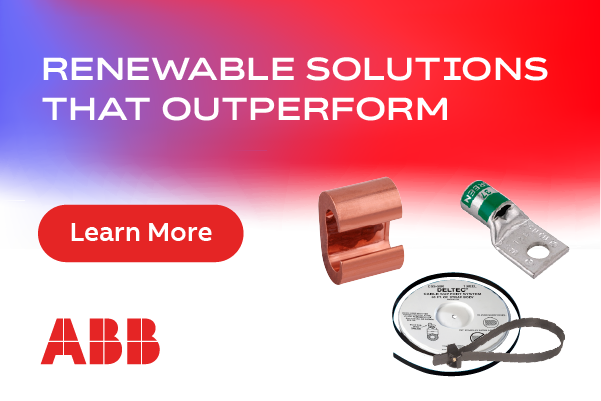Neglected PV Maintenance Fuels Fire Risk
Solar is safe when it’s maintained — and risky when basics slip. Across sites, the pattern behind many PV fires is consistent: soiling and shading create hot spots; loose or corroded DC joints run hot; wildlife and litter add fuel; and moisture inside isolators or combiners encourages tracking and arcs. Temperatures rise, combustibles build, and one imperfect connection becomes ignition.
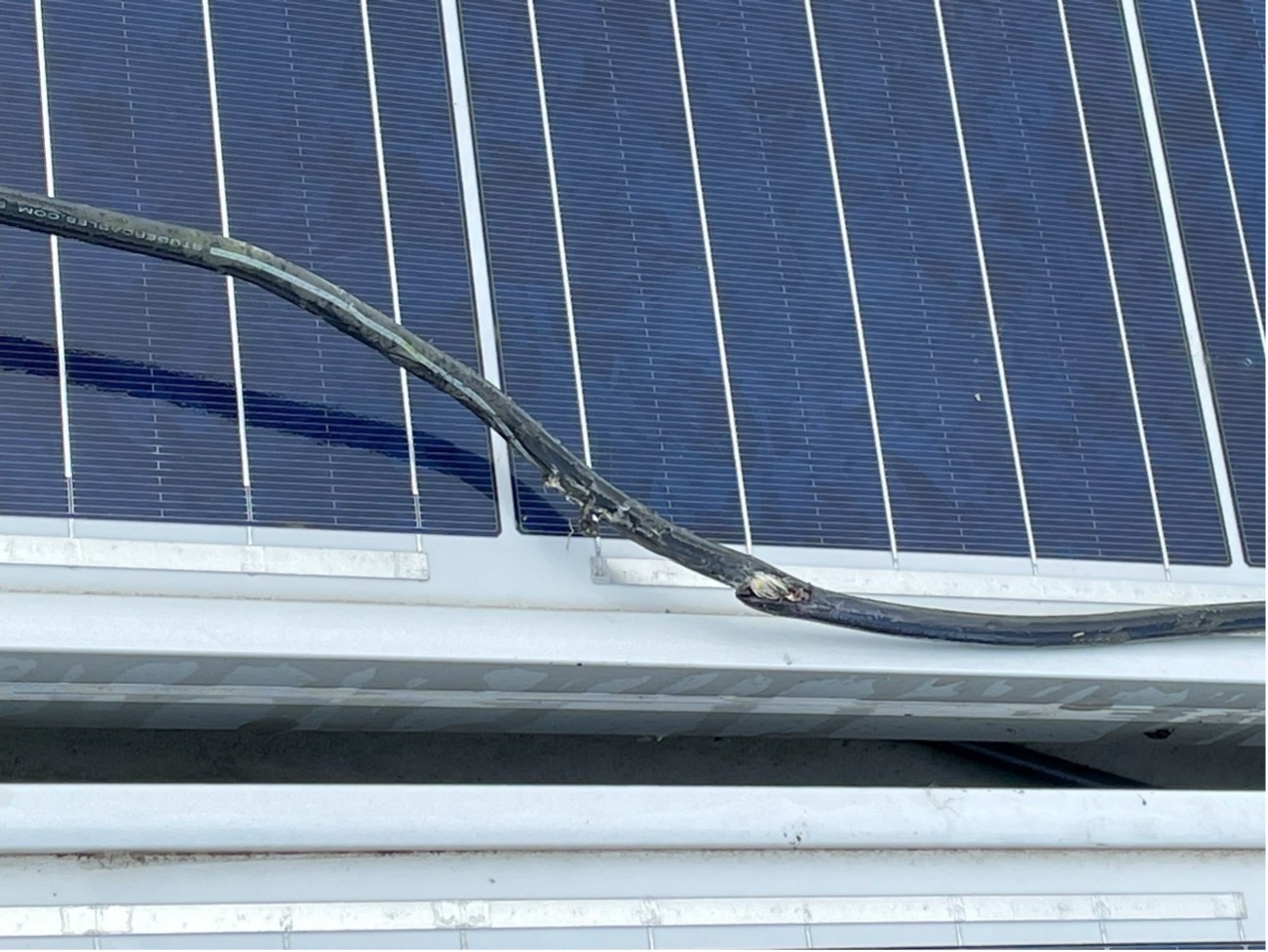
How PV fires actually start
On the DC side, most fires begin with an arc. Anything that raises resistance raises heat (I²R):
- Loose, mismatched, or partially seated MC4s increase contact resistance; thermal cycling and UV embrittle plastics until a sustained arc forms.
- Soiling and partial shading drive cells into reverse bias, creating hot spots; prolonged heating browns encapsulant, cracks backsheets, and can ignite adjacent debris.
- Moisture ingress and corrosion in isolators, junction boxes, and combiners increase resistance and surface tracking.
- Wildlife and vegetation add fuel and damage—nests under arrays, guano at eaves, rodents nicking insulation, weeds at inverter pads.
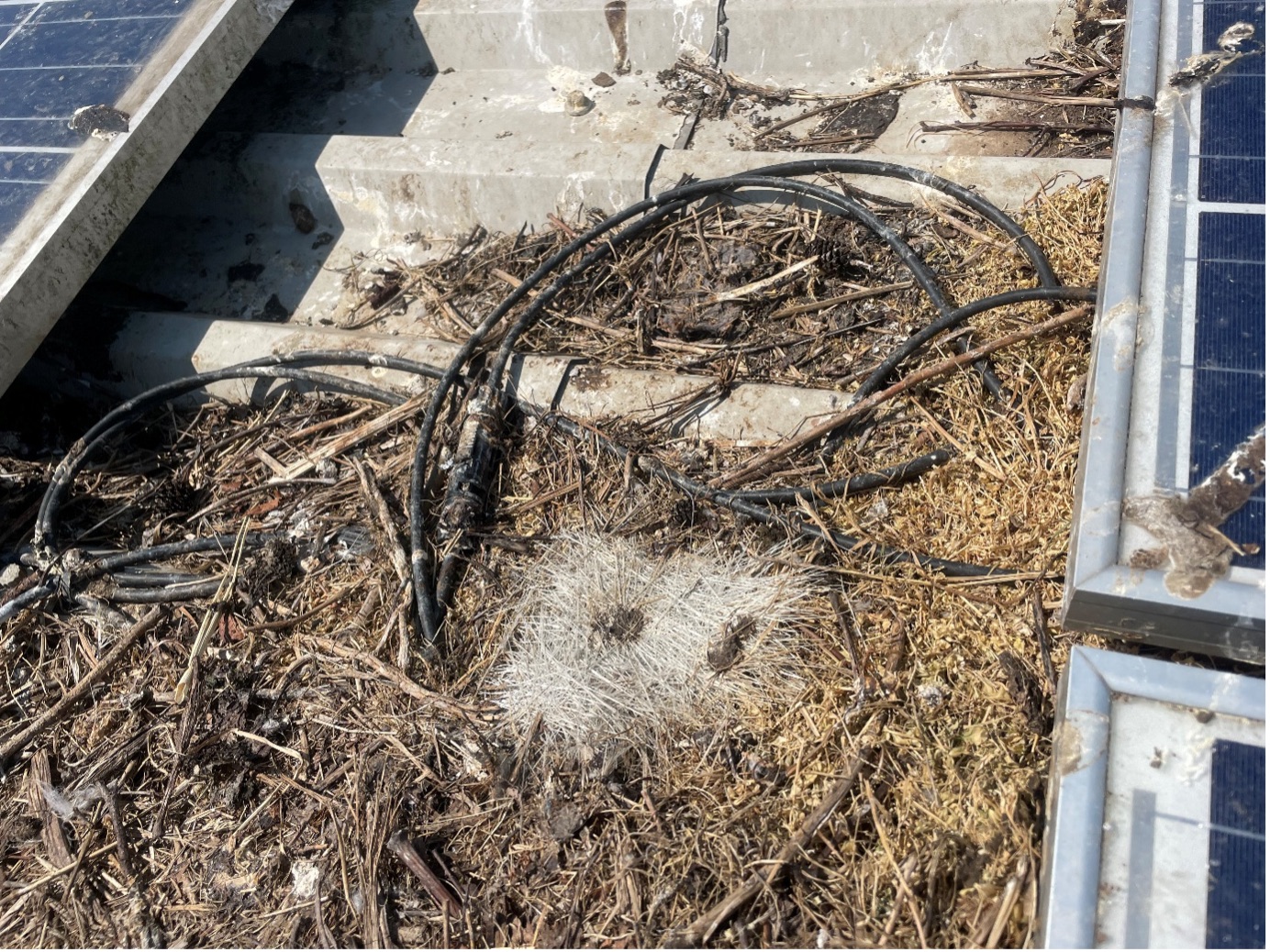
Cleaning is temperature control
Cleaning is often framed as an energy-yield task. It is also your most regular, scalable lever for temperature and fire-risk control:
- Remove hot-spot drivers: clearing droppings, dust bands, and leaf mats restores uniform irradiance so cells share current evenly.
- Reduce thermal cycling: fewer hot spots mean lower peaks and gentler cycles, slowing encapsulant/backsheet degradation and gasket fatigue.
- Cut the fuel load: cleaning clears seeds, feathers, lint, and cardboard shards from frames, trays, gutters, and perimeters—prime ignition points.
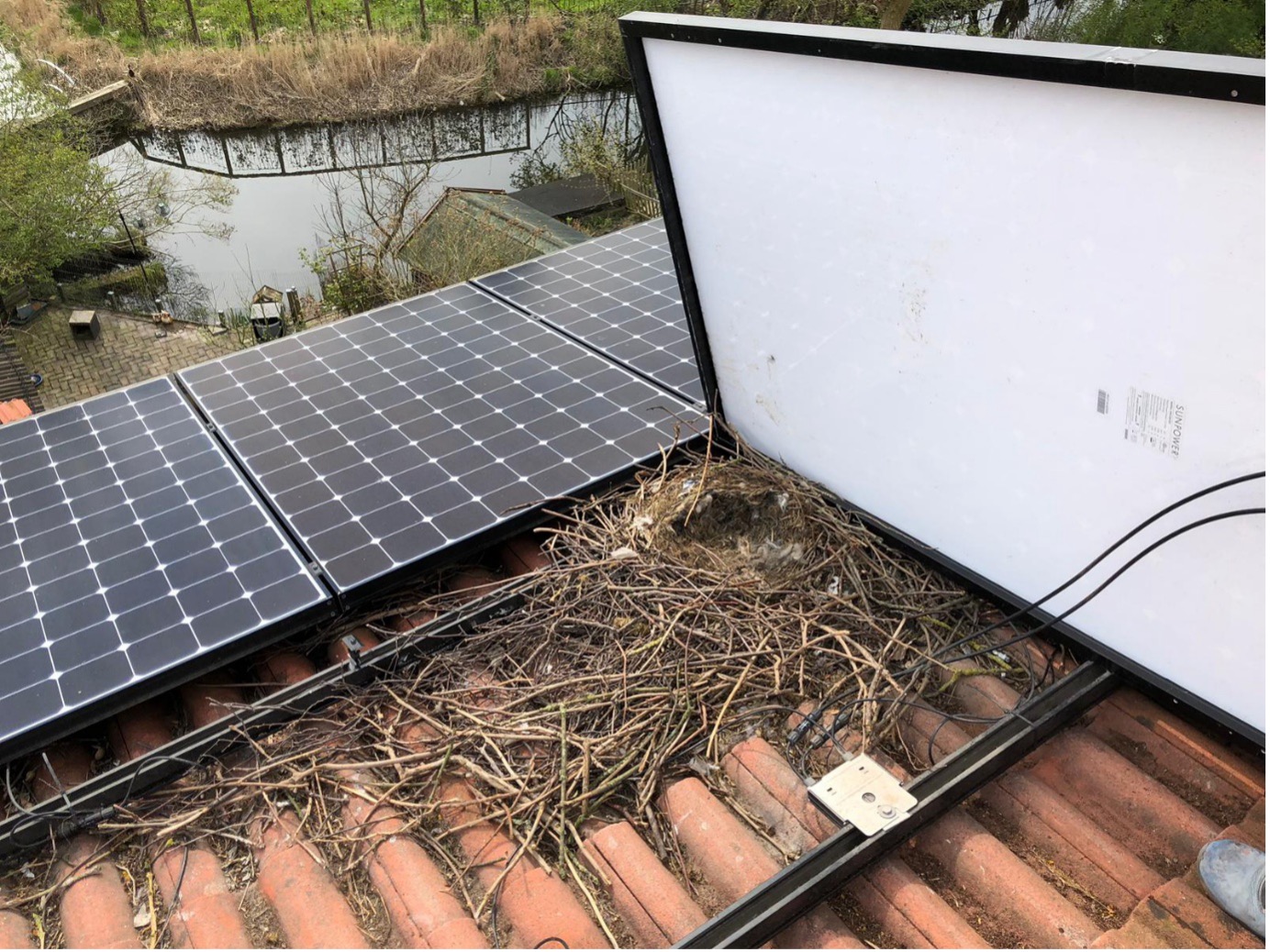
Where neglect bites hardest
- Connectors/terminations. Hand-assembled connectors loosen; incompatible brands get mixed; o-rings age. Without periodic checks and re-termination, resistance rises and heat follows.
- DC isolators/combiners. Unopened for years, they collect dust and moisture; arc chutes crack; terminals loosen. An annual open–inspect–clean–resecure routine prevents many failures.
- Cable management. Unclipped cables chafe on rails; UV hardens jackets; tray edges cut sheaths—hot spots that can arc to frames.
- Roof edges/eaves. Debris and nests accumulate near junctions and connectors, putting fuel next to likely ignition.
- Inverter pads/MV yards. Dry weeds are ready fuel. Maintain clear setbacks and remove debris during routine visits.
A lean maintenance playbook
- Make cleaning data-driven. Build a site soiling profile by season; use weather and loss history to set triggers. After each clean, scan sample strings with IR to confirm hot-spot elimination and record a thermal “normal.”
- Pair cleaning with inspection. The best moment to find hazards is while crews are at the array. Use a short, photo-led checklist (loose connectors, browned backsheets, melted MC4s, nests/debris, chafed cables, cracked glass). Escalate defects to your CMMS with geo-tagged images and clear priorities.
- Prioritize the DC path. Annually (more in harsh sites), open and inspect isolators and combiners; vacuum dust; verify IP seals; re-terminate suspect lugs; torque to spec; replace heat-stressed parts.
- Control the fuel. Include debris removal at gutters, under-array voids, tray covers, and perimeters. Install bird guards where activity is high. Keep vegetation setbacks around inverters and array edges.
- Train for PV, not just glass — and prove it. Use non-conductive tools; route hoses to avoid spraying connectors; clean mornings/evenings; verify glass temps. Teach cleaners to recognize arcing, browned backsheets, and melted connectors. Critically, solar panel cleaning training must become compulsory, and asset owners must insist on seeing valid training certificates before any cleaner is allowed on site. That gatekeeping step does more to assure competence than any toolbox talk.
- Trend temperatures. Store IR images; rising baseline temps at specific joints or modules are early warnings that trigger work orders.
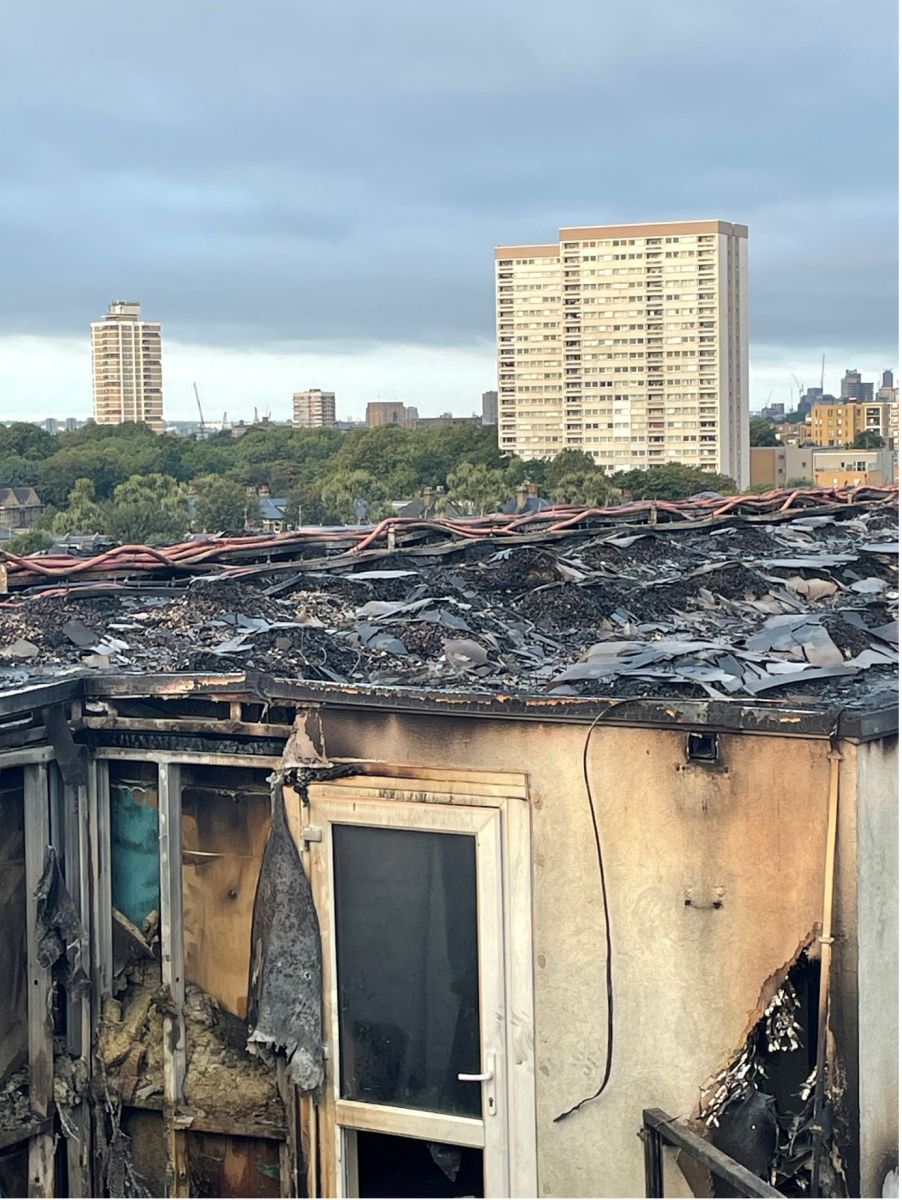 Design and procurement that prevent fires
Design and procurement that prevent fires
If you’re still building, design for maintainability: safe walkways, fall-protection anchors, protected cable routes, covered trays, space for robots, and nearby water points. For existing assets, don’t “buy a wash”; buy outcomes. Specify KPIs for defect detection, IR documentation, debris removal, and time-to-remediate hazards, not just panels washed. Insist on PV-specific training and insurance that covers PV cleaning and electrical work at height.
What “good” looks like
- Cleaning is triggered by data, and hot spots disappear post-clean.
- Connectors, isolators, and combiners are opened, cleaned, and re-secured on schedule.
- Debris and nests are removed; perimeters stay clear.
- IR data is trended; rising temperatures generate work orders before failures.
- Crews work to PV-specific SOPs and a site-specific JHA and rescue plan.
Conclusion
Most PV fires are not mysteries. They are the predictable result of elevated temperatures at resistive points, unattended faults, and available fuel. Treat cleaning as temperature control, pair it with focused inspections, and you convert a stealth risk into a manageable routine—while lifting production as a bonus. Utilize trained, PV-competent cleaning crews and standalone solar fire-safety assessments to prioritize remediation, and document risk reduction for insurers and stakeholders.
Steve Williams is CEO at Clean Solar Solutions America, which provides solar O&M services across the U.S., specializing in solar panel cleaning for commercial rooftop systems, utility-scale ground mount arrays, and residential solar installations.
Clean Solar Solutions America | cleansolarsolutionsamerica.com
Author: Steve Williams










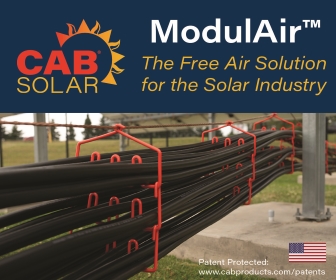
.png?r=8861)
